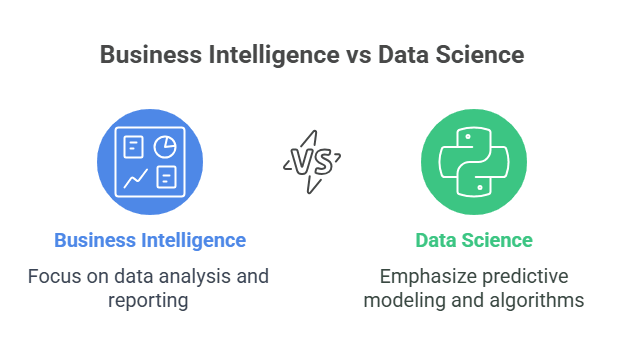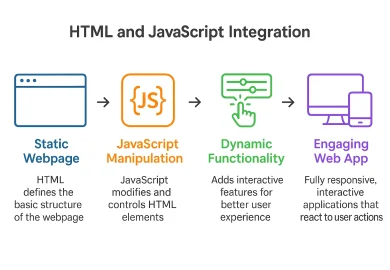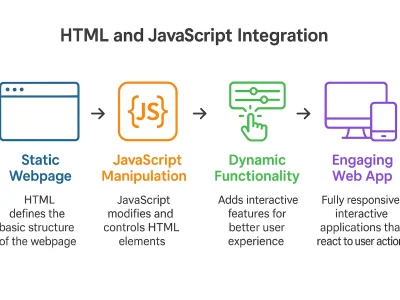Introduction to Business Intelligence and Data Science
The comparison of Business Intelligence vs Data Science is crucial for understanding how both fields handle data differently. It uses tools like Power BI, Tableau to turn raw data into actionable insights. With rapid boom in consumption of online resources be it for ordering food online, organising online meetings or for any study purpose, companies have a lot of dirty or mismanaged data that can be used for making decisions, here data science comes into play which means juggling with data by use of some mathematical and statical analysis to clean data and put them in structured and readable format thereafter Business intelligence tools are used to present data in visual format in front of stakeholder or for internal team meetings to make decisions.
Business intelligence analyses historical data to provide insight and support decision-making; Data Science uses advanced algorithms to predict future outcomes and discover hidden patterns. Basic application of Business intelligence includes Sales performance report, customer segmentation and data science is used in fraud detection, demand forecasting, and personalised recommendations like Spotify music recommendations.

Key Differences in Business Intelligence vs Data Science:
While both fields revolve around data, their goals, methods, and outcomes are fundamentally different.
Focus and Purpose
BI aims to monitor and report on business performance, while data science focuses on exploring and predicting complex outcomes.
Descriptive Vs Predictive Analytics
Descriptive analytics is like understanding past events to know what happened. The main focus is on summarising historical data to identify patterns and trends. The sole purpose is to provide a clear and concise overview of what has occurred within a business organisation. By calculating metrics, stakeholders can make data-driven decisions. At the same time, Predictive analytics look forward to leveraging data to make informed decisions. It scrapes previous data, applies algorithms to forecast future behaviour, and provides insights that allow businesses to prepare for upcoming events. It can predict customer demand, optimise inventory levels.
Strategic Vs Tactical Decision Making
It aims at vision & overachieving goals. It focuses on “what” needs to be achieved and “why” it’s essential. Its main objective is to set the direction and foundation for the entire organisation. At the same time, Tactical decision-making focuses on short-term actions and specific steps needed to execute strategies. It deals with “how” strategic goals will be achieved. It implements strategic plans through concrete steps and initiatives. They respond to the immediate operational environment.
Methodologies and Tools
BI Reports & Dashboards
BI focuses on descriptive and diagnostic analysis using methodologies like online analytic processing and data warehousing. BI tools rely on reporting software like Tableau and SAP Crystal. Dashboards are visual representations of data. Data science uses tools like Python, Machine Learning, Excel, and Power BI.
Data Science Algorithms and advanced machine learning models
It uses algorithms to forecast future outcomes using complex mathematical techniques like neural network tensor flow.
Data Types and Complexity
Structured Vs Unstructured Data –
In the ongoing discussion of Business Intelligence vs Data Science, one major area of divergence is their use of structured vs unstructured data. Structured data is organised and readily available in databases; Business Intelligence focuses on structured data that includes transactional data, sales figures, and customer demographics. The structured nature of data allows straightforward querying and analysis.
Unstructured data lacks a predefined format, which includes text from social media, online reviews, and images. Here, data science comes into play, which uses text mining and machine learning to extract meaningful information from unstructured data. BI systems are designed to work with data that is clean, consistent. BI tools use predefined metrics based on historian data to identify trends, while data science is often more flexible and deals with unstructured data. Data science engages in data wrangling, creates new variables, and can also predict upcoming events.
Decision-Making and Outcomes
Operational efficiency Vs Business innovation-
BI focuses on improving operational efficiency by providing insights into existing processes. Helps organisations identify areas of improvement.
Data-driven insights vs. predictive Modelling
Data science drives innovation by uncovering new opportunities, predicting future trends, developing innovative products, helps organisations identify unmet customer needs and gain advantage.
Skill Set and Expertise Required
BI Analyst Vs Data Scientist
Another key distinction in the Business Intelligence vs Data Science comparison is the skill set each role demands. A BI analyst requires analysis skills, including SQL, data warehousing, and reporting tools like Power BI and Tableau. In contrast, data scientists need to know programming, machine learning, big data, Hadoop, and Spark.
Data Processing Approach
BI relies on ETL (Extract, Transform, load). The goal is to create a well-organised data repository that can be used for reporting and analysis. Data Science involves data wrangling, feature engineering, handling missing values and outliers, cleaning and preprocessing data to improve performance, and aiming to provide valuable insights to models from diverse data sources.
Application and Use Cases
Business Intelligence and Operational Efficiency –
- Businesses use BI tools to generate detailed reports that provide insights into business metrics and operational data, allowing businesses to dive deep for further analysis. Dashboards offer a visual interface that combines data visualisation with real-time updates.
- Real-time BI application analyses data, enabling businesses to make immediate decisions based on updated information.
Data Science in PredAnalytics and Innovation-
- Predictive analytics strategies enable companies to forecast trends and make decisions by analysing historical data so business can predict customer behaviour, future risk and many more.The integration of predictive analytics into business applications ensures smarter resource allocation and better decision-making. As businesses increasingly adopt AI-driven tools, predictive modeling becomes necessary to stay relevant in the market.
How Business Intelligence vs Data Science Can Work Together: A Unified Approach
Business Intelligence (BI) and Data Science may no longer be separate entities but complementary forces driving strategic decisions. BI aims at historical data analysis and reporting, providing organisations the insights with previous performance. Data Science leverages analytics and machine learning to gain future insights & provide actionable strategies. Combining both gives a powerful approach to unlocking the full potential of data. Companies use BI to track current operations and identify KPIs. For instance, a retailer may use BI dashboards to track sales trends. On the other hand, Data Science models can predict customer preferences or forecast demand for specific products. This synergy makes businesses make smarter decisions. When choosing BI and Data Science, the decision solely depends on the problem. BI is a good fit for descriptive analytics—knowing what happened and why—while Data Science excels in predictive analytics, answering what will happen next. A combination of both ensures that businesses stay ahead in a competitive market. Ultimately, combining BI and Data Science empowers companies to turn raw data into actionable insights, providing growth and efficiency while adapting to an ever-evolving market. Understanding Business Intelligence vs Data Science helps companies evaluate where each solution fits best in solving data-related problems.
Choosing Between BI and Data Science
Businesses must choose between Business intelligence and data science according to their requirements and the skill set of their workforce. Both technologies have their own merits and give output according to their configuration.
- Aligning with Business Goals: The first step in choosing between BI and data science is understanding needs of our business, if we only want to visualise thing BI can do and from what sources do we have the data, how much data is cleaned, if it is unstructured or not or do we need to scrape the data or not, if we have unclean, unstructured data then alot of preprocessing is required that can only be done with help of Data science but if we have somewhat clean data and requires only visualisation purpose then BI can solve the purpose.
- Assessing Team Expertise and Resources: Another crucial factor while deciding to what to use is Team Expertise, if we have team of strong highly qualified engineers then Data science would be good option to choose as it provides lot of flexibility in cleaning, preprocessing and applying various algorithms to scrutinise data but if we have small size of team and requires some easy to use tools then BI can be good option that provides enhance visualisation for better decision making.
Conclusion:
In the debate of Business Intelligence vs Data Science, it’s clear that both offer unique strengths in today’s fast-paced, data-driven environment for better decision making. Business intelligence and data science go hand in hand, or we can use them separately per our requirements. All MNC’s in big countries are adopting this technology to calculate risk measurement, fraud analysis, data analysis be it presenting to stake holder or to design strategies for internal company growth, it is very much necessary to adapt this technology, not only for the business perspective, it also can detect the probability of person health issues or how much they are prone to it. The Data science field is dynamic and has not left any page unturned; the quicker adaptation of these fields, the more likely to be ahead of your competitors in the market. Acquiring these data tools will not only help business growth but also increase the skill set of employees, opening new opportunities for their self-growth. Altogether, this is a field for a lot of growth and exposure in addition to beneficial aspects in business, so anyone working or functioning in any domain must learn and adapt to this technology.Understanding the strengths of each in the Business Intelligence vs Data Science comparison helps organisations choose the right strategy for data-driven growth.
Next Steps in Business Intelligence & Data Science:
Further
As you explore the world of Business Intelligence vs Data Science, keep learning with hands-on projects and real-world case studies. Business Intelligence (BI) and Data Science (DS) involve repeated exploration and adapting to emerging trends. Here’s how you can stay ahead:
- Learning BI & DS Tools: Anyone with an internet connection can learn about Data field; a lot of options are available, even free of cost, like YouTube, online courses, unpaid internships, making projects- datasets are available on Kaggle (Kaggle is a competitive platform for data scientist).
- Exploring AI & Big Data Trends: Data field is not only limited to analysing or forecasting but there are many more things developing day by day that include Deep learning, Natural Language processing where we can talk with data like human and bring out efficient output, so this field has enormous potential, right time to take advantage of this technology is now.
- Resources for Continuous Learning: Some valuable resources may include YouTube videos, maybe purchasing online courses, online groups of the same interest, many companies providing virtual internships, regularly reading blogs, attending webinars, and engaging with industry experts will keep your knowledge sharp.




